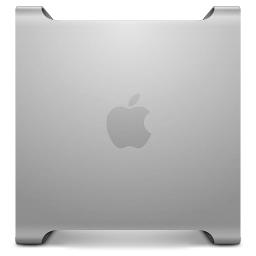In my search for an elegant MarkDown solution for my Power Mac G5, I have continued to dig into all kinds of options from fiddling with open source editors written in Python to building my own.
Programming on your G5 is actually pretty straightforward.
I remember the first Power Mac G4 I got my hands on at a previous IT job many years ago. As I was studying computer science at the time, my first action was to jump into terminal and see if “gcc” was really included by default. And sure enough, every Mac comes with a standard open source compiler. Cool!
Of course, if you want to build something beyond a simple command line app, you’ll need bigger and better tools. The best is XCode, which you could typically install as an extra from your Leopard DVD. You can still grab XCode 3.1.1 from the Apple Developer site here. You will have to log in.
There are other options too.
One of my preferred options over the years was Real Basic. Today, it’s called Xojo, since it really has nothing to do with the BASIC programming language that some of us encountered years ago. Real Basic was an interesting tool because it let you start at the end of your coding process by building the GUI app first and then adding in the functionality you want to have happen. The code is also fairly readable and simpler than Objective C at the cost of a lot of potential fine tuning.
My first experience with Real Basic was with an academic version in my IT position. We needed an OS 8.6 compatible screen lock to have students log into lab computers with a pass phrase. I whipped one up in like 30 minutes using Real Basic.
On Leopard, I’ve used Real Basic to create game character generators and other basic text manipulating utilities in a pretty short amount of time. I’ve grown to like some of its features even as other things drive me nuts.
To bring this home, I decided to crank out a couple of MarkDown attempts using Real Basic. The last version to work on Power Macs is 2009R3. I first built some basic code that would automatically edit what you type into a rich text field and catch MarkDown formatting. While it sort of half worked, it was way too complicated after even just a few basic formatting commands.

I then used “brew” to install the ever useful multimarkdown command line utility which can take a text file with MarkDown formatting and turn it into a pdf, html file, or whatever. It’s a really great option for working with MarkDown. In Real Basic then, I created a simple window with a rich text field on one side and a live preview html window on the other. As you typed, the program would quickly use multimarkdown to generate preview html of your document. It was dead simple and started me down the path to a solution.
But then I hit a road block – whenever the live html preview updated, it would steal focus from the rich text field. No matter the workarounds I tried, there was no way around this. It turned out to be a bug that was eventually fixed in a later version of Real Basic, which won’t run on my machine.
This is life with older machines.
If you happen to have a license of Xojo/Real Basic, they will still let you download an access key and older copies of its software. I recommend it if you want to mess around with some simple prototype apps or invite a young person to learn some basic coding building blocks. But where you save time, you’ll ultimately also give up the ability to have an app do what you want it to do.
— Nathan


